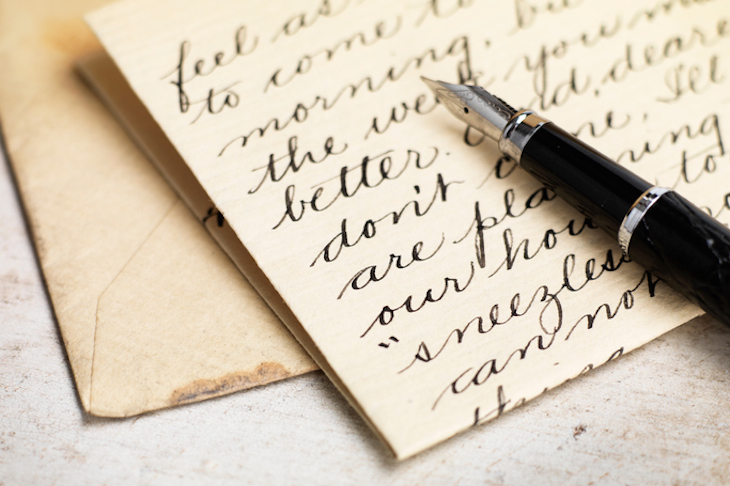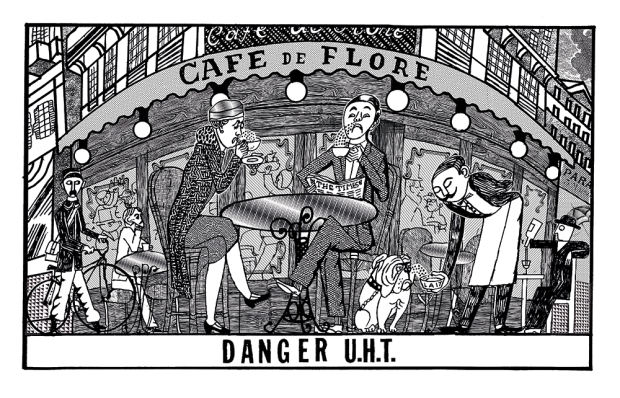
Does anyone still care about handwriting? Although it was for centuries the medium and motor of daily life, handwriting has become, like public libraries and secondhand bookshops, a rare sight. One in three British adults now uses pens only to sign their names. Starved of opportunity, most people’s writing has regressed into a near-illegible scrawl. When even the leader of the opposition confesses that he can’t read his own writing, something is up. So should we cut our losses and follow Finland, which since 2015 has taught keyboard lessons in lieu of handwriting?
Emphatically not. Handwriting remains the most cogent vehicle for personal expression. If we let the skill lapse, we all lose out. Several studies have shown that the more fluent the complex process of handwriting becomes, the more brainpower is devoted to cognitive activity: to write better really is to think better.
David Butterfield and Simon Jenkins on the power of handwriting:
Sentences flow with less forethought when typed. Worse still, digital tools let writers forego much of their mental discipline: considerations of spelling, punctuation, structure and presentation — the essentials for effective writing — are ceded to robotic wardens. Handwriting makes the head think.
We still make instinctive assumptions about others from their handwriting, distinguishing a neat from a slovenly hand, or admiring consistent over chaotic script. These are fair inferences, not graphological mummery. Good handwriting displays patience, care and self-respect; a bad hand is an embarrassment. There’s an obvious arrogance in making readers pore over every unruly pen stroke.
Yet there’s more to our handwriting than efficacy and individuality: we can’t escape the history engrained in our script. Our alphabet remains in essence that used by the Romans, which was itself derived from the Phoenicians, via the Greeks and the Etruscans. Take our capital letters, which channel the chiselled letter forms of Roman monuments, designed to be paragons of clarity legible from afar. Our lower-case letters instead reflect the 8th-century intervention of Charlemagne, the first Holy Roman emperor. After the Roman Empire fell, written texts developed chaotically in different regions of Europe; soon they had become unintelligible to anyone outside their immediate communities. As diplomacy faltered, Charlemagne commissioned a new, clear hand, adapting the rounded ‘insular’ script of Britain into crisp Carolingian minuscule. You might assume that this script lies buried deep in medieval manuscripts; in fact, it looks very like the letters of this sentence.
This is because the same problem cropped up again. After the Carolingian Empire fragmented, individual nations developed the script in idiosyncratic ways, from the crabbed peculiarities of the English chancery to the angularity of gothic blackletter. Such innovations were hard-going for untrained eyes. It took a cultural revolution, not imperial decree, to restore order: when the Renaissance at last sprang in Northern Italy, scholars ransacked libraries for vestiges of Roman antiquity. Without the tools to tell them otherwise, they supposed that books in beautiful Carolingian hands were written by the Romans themselves.
To sweep away the cobwebs of ‘gothic’ barbarity and guarantee pellucidity, the humanists — and the transformative technology of the printed press — deliberately aped this lettera antica. The script swiftly spread throughout Europe’s printing houses, despite the stout resistance of gothic typefaces in the north. The text of western books, then, reflects three concerted pushes for intelligibility, by pragmatic Romans, scholarly Carolingians and bookish humanists.
Our handwriting’s heritage shows that lapses into illegibility are reversible, and that improvements can come by decree from above and by innovation from below. Our school system must face the present problem: will serious attention be given to the mandated medium of national examinations, promoting clear and efficient handwriting, or will writing be left to dwindle into a minority pursuit? If we don’t take greater pride and interest in it, we’ll end up unable to record our thoughts without a power cord, or perhaps even to print our names. What grim fare would await our future historians, faced with the blank sterility of digital-only archives! So unless we fancy the ‘X’ of the medieval illiterate, let’s sit up and read the writing on the wall.
Got something to add? Join the discussion and comment below.
Get 10 issues for just $10
Subscribe to The Spectator Australia today for the next 10 magazine issues, plus full online access, for just $10.
You might disagree with half of it, but you’ll enjoy reading all of it. Try your first month for free, then just $2 a week for the remainder of your first year.














Comments
Don't miss out
Join the conversation with other Spectator Australia readers. Subscribe to leave a comment.
SUBSCRIBEAlready a subscriber? Log in